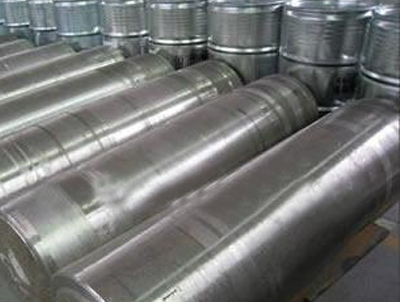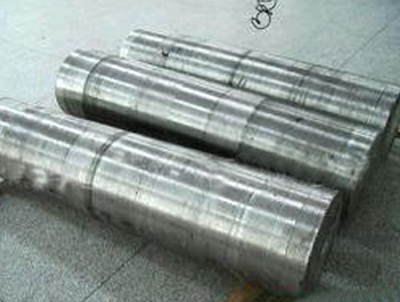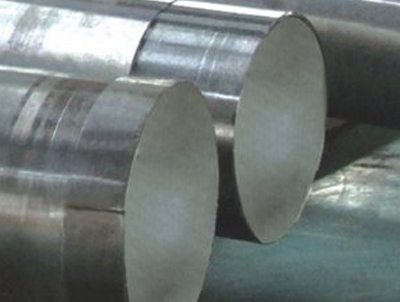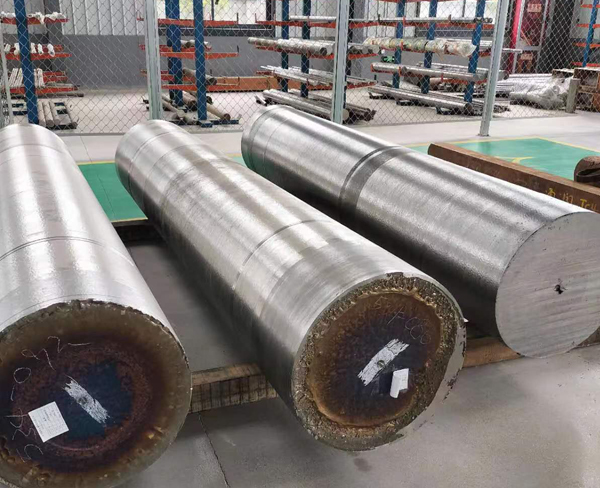Introduction to Selection of Titanium Alloys
General Background
TITANIUM is a low-density element (approximately 60% of the density of steel and superalloys) that can be strengthened greatly by alloying and deformation processing. (Characteristic properties of elemental titanium are given in Table 2.1.) Titanium is nonmagnetic and has good heat-transfer properties. Its coefficient of thermal expansion is somewhat lower than that of steel and less than half that of aluminum. Titanium and its alloys have melting points higher than those of steels, but maximum useful temperatures for structural applications generally range from as low as 427 °C (800 °F) to the region of approximately 538 °C to 595 °C (1000 °F to 1100 °F), dependent on composition.
Titanium aluminide alloys show promise for applications at temperatures up to 760 °C (1400 °F). Titanium and titanium alloys are produced in a wide variety of product forms, with some examples shown in Fig. 2.1. Titanium can be wrought, cast, or made by P/M techniques. It may be joined by means of fusion welding, brazing, adhesives, diffusion bonding, or fasteners. Titanium and its alloys are formable and readily machinable, assuming reasonable care is taken. Some specific examples of product forms are: Mill products • Ingot • Billet • Bar • Sheet • Strip • Tube • Plate Nonmill products • Sponge • Powder Customized product forms • Forgings • P/M items • Castings.
One of many different types of investment cast titanium parts now produced is shown in Fig. 2.2. Figure 2.3 shows a large forged titanium part. This part weighs approximately 1400 kg (3000 lb).
Titanium has the ability to passivate and thereby exhibit a high degree of immunity against attack by most mineral acids and chlorides. Pure titanium is nontoxic; commercially pure titanium and some titanium alloys generally are biologically compatible with human tissues and bones.
The excellent corrosion resistance and biocompatibility coupled with good strengths make titanium and its alloys useful in chemical and petrochemical applications, marine environments, and biomaterials applications. The combination of high strength, stiffness, good toughness, low density, and good corrosion resistance provided by various titanium alloys at very low to elevated temperatures allows weight savings in aerospace structures and other high-performance applications.
Selection of Titanium Alloys for Service
Primary Aspects. Titanium and its alloys are used primarily in two areas of application where the unique characteristics of these metals justify their selection: corrosion-resistant service and strength-efficient structures. For these two diverse areas, selection criteria differ markedly. Corrosion applications normally use lower-strength “unalloyed” titanium mill products fabricated into tanks, heat exchangers, or reactor vessels for chemical-processing, desalination, or power-generation plants. In contrast, high-performance applications such as gas turbines, aircraft structures, drilling equipment, and submersibles, or even applications such as biomedical implants, bicycle frames, and so on, typically use higher-strength titanium alloys. However, this use is in a very selective manner that depends on factors such as thermal environment, loading parameters, corrosion environment, available product forms, fabrication characteristics, and inspection and/or reliability requirements (Fig. 2.4). Alloys for high-performance applications in strength-efficient structures normally are processed to more stringent and costly requirements than “unalloyed” titanium for corrosion service. As examples of use, alloys such as Ti-6Al-4V and Ti-3Al-8V-6Cr-4Mo-4Zr are being used for offshore drilling applications and geothermal piping, while alloys such as Ti-6Al-4V, Ti-6Al-2Sn-4Zr-2Mo+Si, Ti-10V-2Fe-3Al, and Ti-6V-2Sn-2Zr-2Cr-2Mo+Si are used or planned for use in aircraft or in gas turbine engines for aerospace applications.
Desired mechanical properties such as yield or ultimate strength to density (strength efficiency), fatigue crack growth rate, and fracture toughness, as well as manufacturing considerations such as welding and forming requirements, are extremely important. These factors normally provide the criteria that determine the alloy composition, structure (alpha, alpha-beta, or beta), heat treatment (some variant of either annealing or solution treating and aging), and level of process control selected or prescribed for structural titanium alloy applications. A summary of some commercial and semicommercial titanium grades and alloys is given in Table 2.2.
For lightly loaded structures, where titanium normally is selected because it offers greater resistance to the effects of temperature than aluminum offers, commercial availability of required mill products, along with ease of fabrication, may dictate selection. Here, one of the grades of unalloyed titanium usually is chosen. In some cases, corrosion resistance, not strength or temperature resistance, may be the major factor in selection of a titanium alloy.
Selection for Corrosion Resistance.
Economic considerations normally determine whether titanium alloys will be used for corrosion service. Capital expenditures for titanium equipment generally are higher than for equipment fabricated from competing materials such as stainless steel, brass, bronze, copper nickel, or carbon steel. As a result, titanium equipment must yield lower operating costs, longer life, or reduced maintenance to justify selection, which most frequently is made on a lower totallife-cycle cost basis. Commercially pure (CP) titanium satisfies the basic requirements for corrosion service. Unalloyed titanium normally is produced to requirements such as those of ASTM standard specifications B 265, B 338, or B 367 in grades 1, 2, 3, and 4 in the United States. These grades vary in oxygen and iron content, which control strength level and corrosion behavior, respectively. For certain corrosion applications, Ti-0.2Pd (ASTM grades 7, 8, and 11) may be preferred over unalloyed grades 1, 2, 3, and 4.
Selection for Strength and Corrosion Resistance.
Due to its unique corrosion behavior, titanium is used extensively in prosthetic devices such as heart-valve parts and load-bearing hip and other bone replacements. In general, body fluids are chloride brines that have pH values from 7.4 into the acidic range and also contain a variety of organic acids and other components—media to which titanium is totally immune. Ti-6Al-4V normally is employed for applications requiring higher strength, but other titanium alloys are used as well. Moderately high strength is important in the application of titanium to prosthetics, but strength efficiency (strength to density) is not the prime criterion, assuming that biocompatibility concerns are addressed. However, while strength efficiency is not the defining factor, it has been suggested that the lesser weight of titanium alloy implants plays a noticeable role in patient perception of the efficacy of the device implanted in the body.
Selection for Strength Efficiency.
Historically, wrought titanium alloys have been used widely instead of iron or nickel alloys in aerospace applications because titanium saves weight in highly loaded components that operate at low-to-moderately elevated temperatures. Many titanium alloys have been custom designed to have optimum tensile, compressive, and/or creep strength at selected temperatures,and at the same time to have sufficient workability to be fabricated into mill products suitable for a specific application.
Selection for Other Property Reasons.
Optic-system support structures are a little-known but very important structural application for titanium. Complex castings are used in surveillance and guidance systems for aircraft and missiles to support the optics where wide temperature variations are encountered in service. The chief reason for selecting titanium for this application is that the thermal-expansion coefficient of titanium most closely matches that of the optics. Although prosthetic applications for titanium alloys are made for biocompatibility and strength reasons, there is a benefit for structural implants such as hip stems because the lower modulus (than cobalt alloys and stainless) allows more load transfer to the bone and the potential for longer-lasting implant performance.






